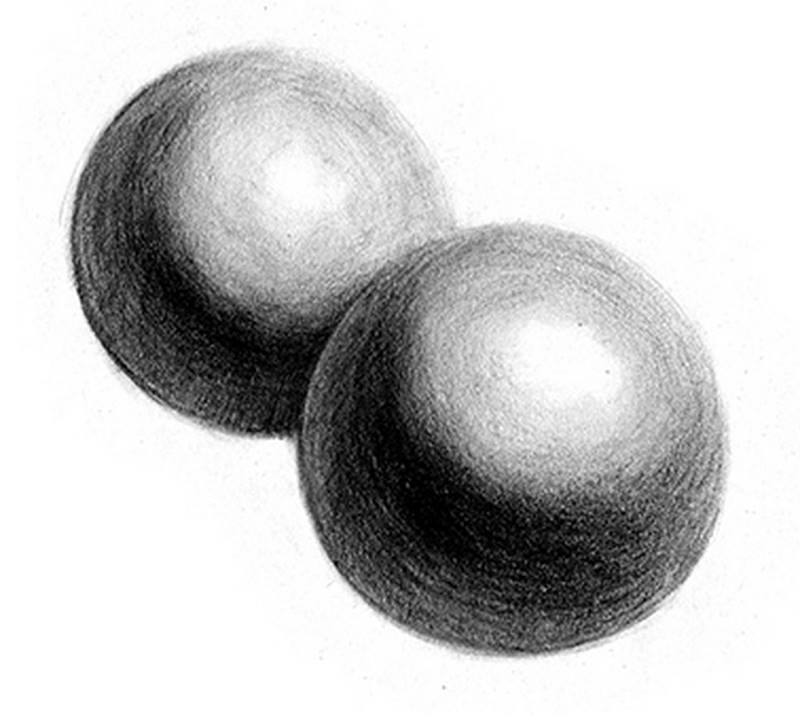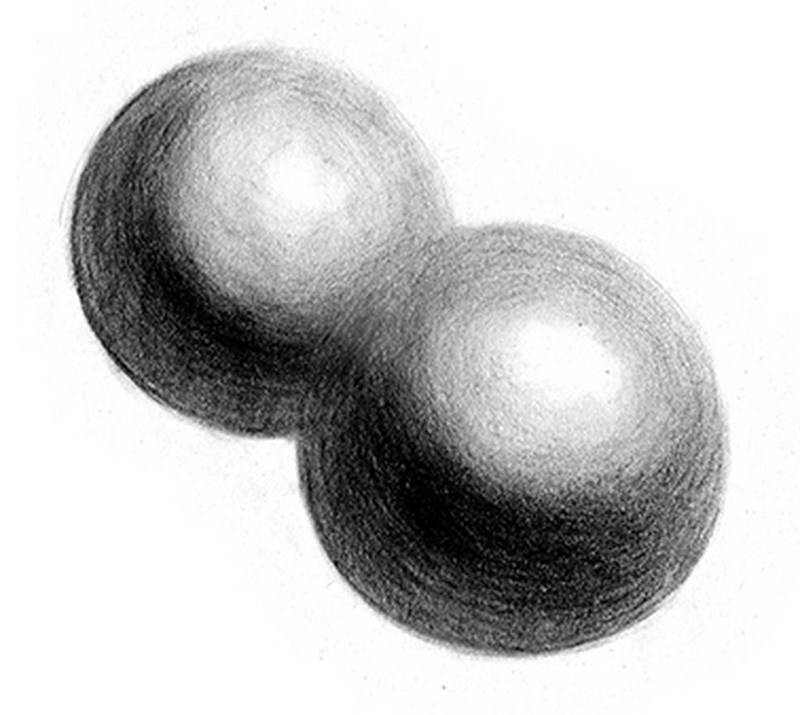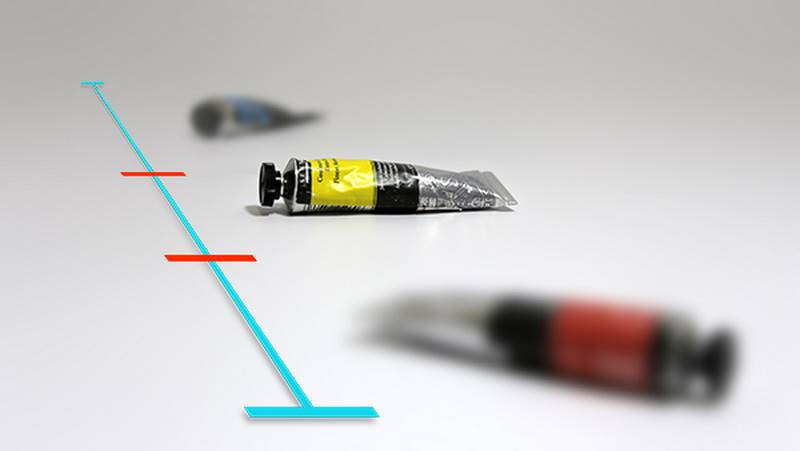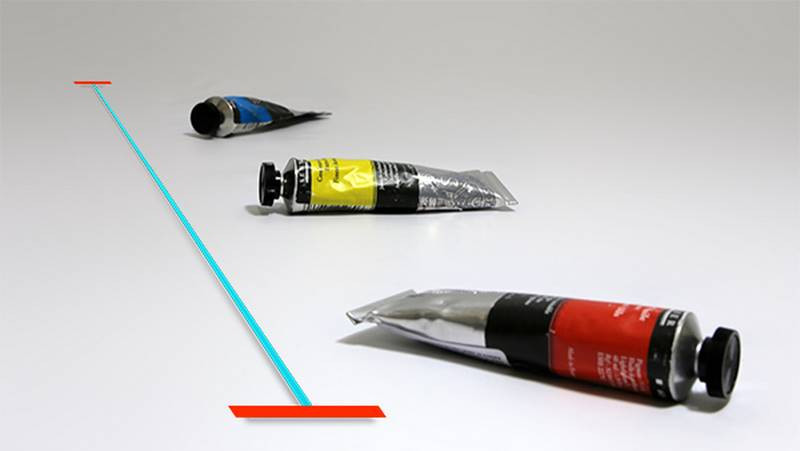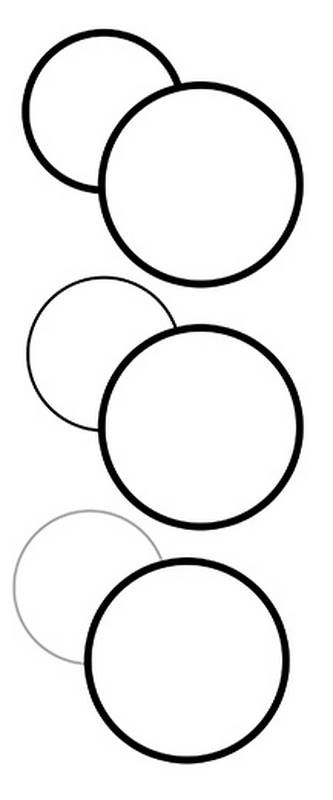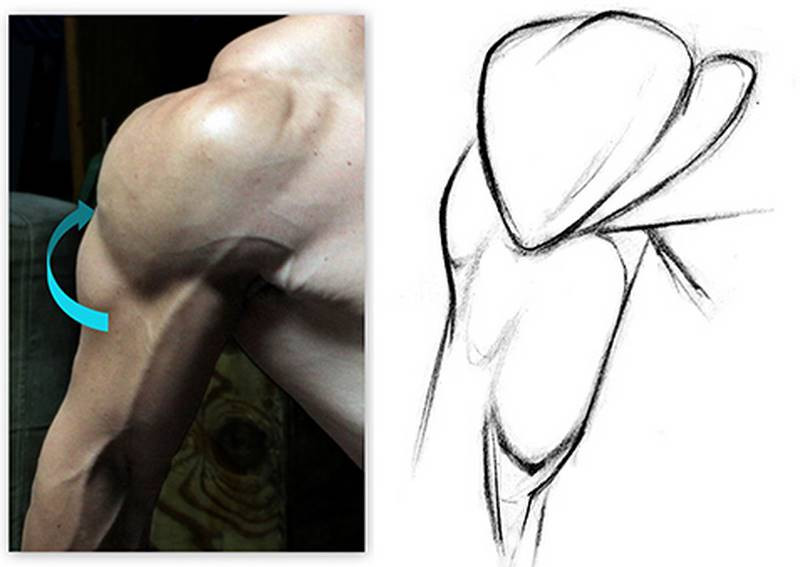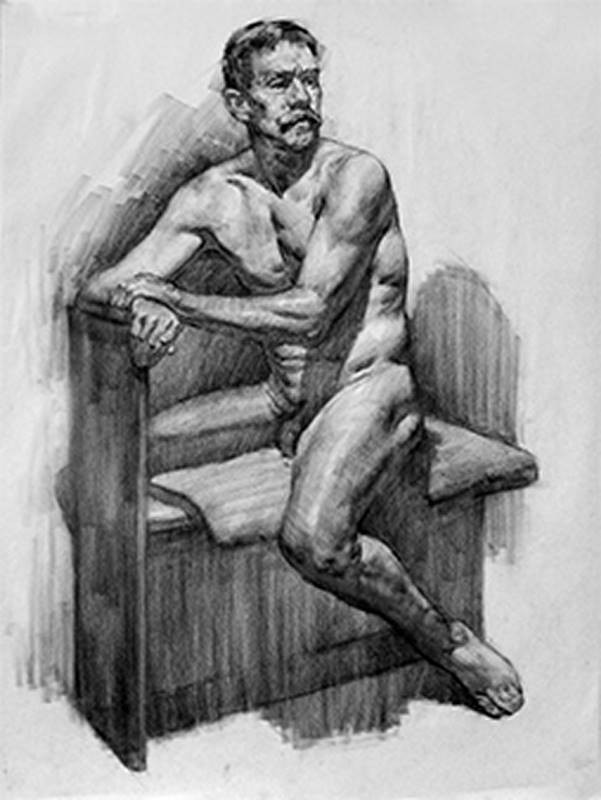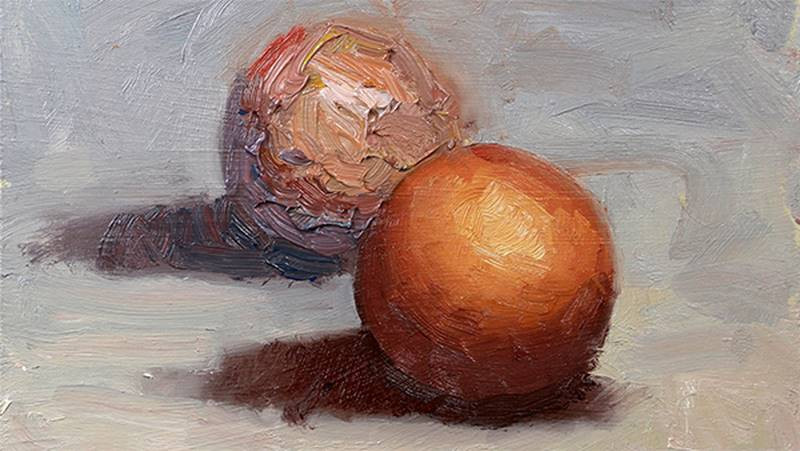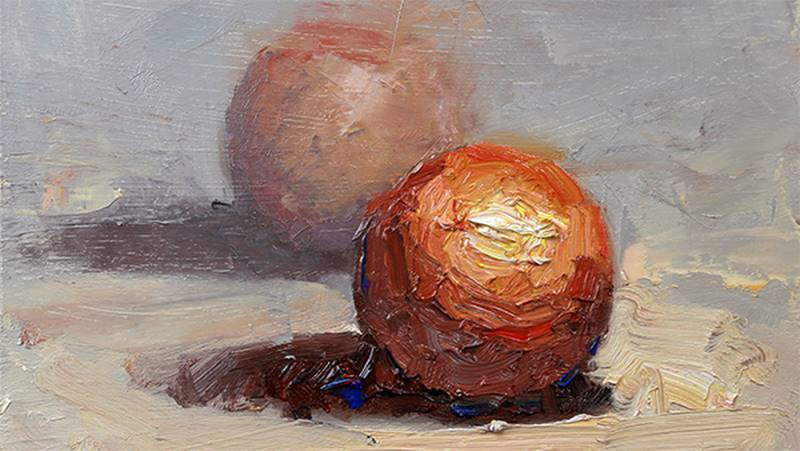In this third part of the illusion of depth, we'll look at how edges, lines, cast shadows, and paint thickness can be used to add depth to your drawings and paintings.
Edge
Sharp edges are visually a lot louder than soft edges and so they tend to pop forward and separate object, whereas soft or blurry edges recede and bring things closer together. So, a sharp edge between these two object will separate them. Blurring the edge will somewhat merge them and bring them closer together.
When our eyes focus on something, things further away or closer to us from that object will be blurred. In photography this is called, depth of field. When the depth of field is high, sharp details are seen in a very large range. Objects far away from the focal distance are still sharp. This can seem unnatural because that's not really how our eyes see things. Naturally we will see a narrower depth of field to help us focus on a particular area. A narrower depth of field is a great tool to add depth to a drawing.
Line
Line isn't really a type of edge; sharp, firm, or soft, but it is a way to indicate the edge of a form. It's a stylized way that doesn't exist in reality, but nonetheless it is a way to indicate depth and can be very effective. The type of line you use can make or break the illusion of depth. You can vary the thickness of the line and the value of the line to achieve this.
As forms recede back into space, use a thinner line. This is related to perspective since the objects further away from us will appear smaller, including the lines. We tend to use the same line throughout the drawing. Sometimes this might be because of our tools allowing for just one line weight, such as the tip of a graphite pencil or a ballpoint pen. In that case, you'll have to go over the line a few times to make it thicker unlike with a brush or a pencil sharpened to a taper, where you can vary the angle to change the line thickness. Also, consider varying the value of the line. Make the objects further back lighter and the ones that you want to pop forward darker. This is related to atmospheric perspective that I talked about in part 1.
Line can be used not only in separate objects, but within an object as it recedes or where there is overlapping form.
Such as in the figure. This tricep is closer to us than the deltoid. But, I want to show that the edge of the tricep is wrapping around and behind the deltoid. So, instead of using the same line in the overlap, which is still effective because of the overlap, I could use line weight to make it even more effective. I could make the line thicker in the areas that are closer and thin out and lighten the line of the tricep as it wraps around the deltoid.
Cast Shadows
Cast Shadows are another way you can show that something is in front of something else, especially when there is no overlap to do that. In fact this is heavily used in graphic design to pop things forward. Photoshop and other similar programs have a "drop shadow" option that immediately pops a shape out from the background.
In this figure drawing the cast shadow helps to bring the arm away from the body. And suggests that its further away at the elbow because of the greater distance to the edge of the cast shadow.
A cast shadow on a ground surface can indicate that there is open space behind the object and also can serve as a great way to add converging lines to add some perspective to a scene.
Paint Thickness
The final thing I want to mention is quite literally adding depth to a picture. If you're using paint, you can physically bring something forward by using thicker paint on that area.
I won't go not too much detail about it, but I think it's easy concept to grasp. If you have two objects, using thicker paint in the distant one might not be a good idea. But thicker paint in closer objects can serve as a great attribute for depth. Just an idea..
Ultimately, creating the illusion of depth in your artwork will be achieved through a combination of the concept I went over in the last 3 videos, and its up to you to decide which ones you want to use and how you want to use them. It depends on your style. If you're a beginner, try all of them and don't worry too much about style. As you develop, your taste will grow and change, and your style will come naturally.

